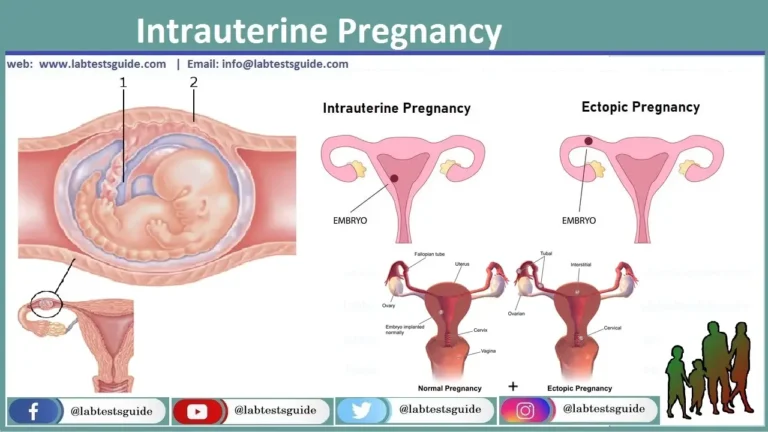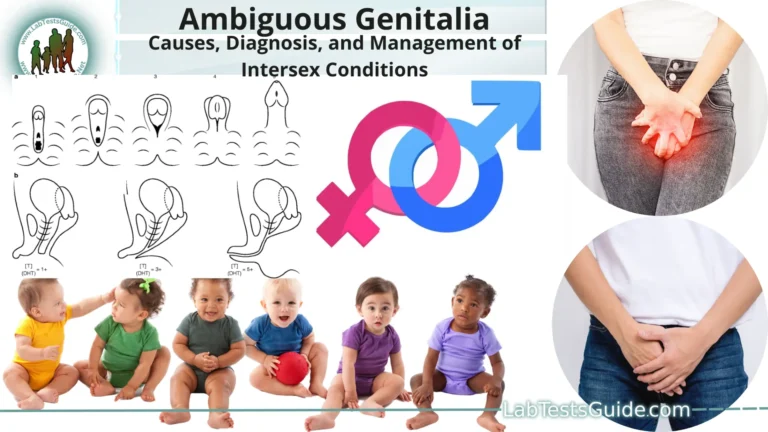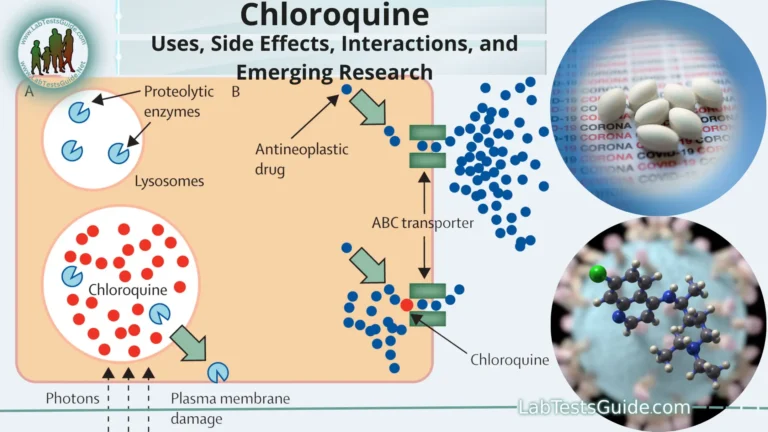Dysfibrinogenemia is a rare genetic disorder characterized by abnormalities in the structure or function of fibrinogen, a protein involved in blood clotting. Fibrinogen is essential for the formation of blood clots, which are necessary to stop bleeding and promote wound healing. Dysfibrinogenemia can lead to a predisposition to bleeding or thrombosis (blood clot

Definition of Dysfibrinogenemia.
Dysfibrinogenemia is a rare genetic disorder characterized by abnormalities in the structure or function of fibrinogen, a critical protein involved in the process of blood clotting, also known as coagulation. Fibrinogen is synthesized in the liver and circulates in the bloodstream in an inactive form. When an injury occurs and bleeding begins, fibrinogen is converted into fibrin through a series of enzymatic reactions. Fibrin molecules then form a mesh-like network that traps blood cells and platelets, creating a stable blood clot that helps stop the bleeding and promote wound healing.
Symptoms of Dysfibrinogenemia:
Here are some of the common symptoms and manifestations associated with dysfibrinogenemia:
Bleeding Tendencies:
- Easy Bruising: Individuals with dysfibrinogenemia might bruise easily, even with minor trauma.
- Prolonged Bleeding: After injuries or surgeries, bleeding might last longer than usual.
- Nosebleeds: Frequent or severe nosebleeds (epistaxis) can occur.
- Heavy Menstrual Periods: Women with dysfibrinogenemia might experience abnormally heavy and prolonged menstrual bleeding.
- Bleeding Gums: Gums might bleed easily, especially while brushing teeth or eating.
Thrombotic Risk:
- Deep Vein Thrombosis (DVT): Some individuals may be at a higher risk of developing blood clots in the deep veins of the legs or other areas.
- Pulmonary Embolism (PE): Clots that form in the veins can potentially travel to the lungs and cause a pulmonary embolism.
- Thrombosis: Abnormal clotting in arteries or veins, leading to conditions like stroke, heart attack, or thrombophlebitis (inflammation of a vein).
Miscellaneous Symptoms:
Delayed Wound Healing: Wounds might take longer to heal due to impaired clot formation.
Spontaneous Bleeding: In severe cases, bleeding might occur without an obvious cause or injury.
Diagnosis of Dysfibrinogenemia:
Here are the key steps and components involved in diagnosing dysfibrinogenemia:
- Clinical Assessment and History: The medical history of the patient and their family plays a crucial role in diagnosis. A detailed assessment of bleeding or clotting symptoms, family history of similar conditions, and any other relevant medical information can provide important clues for further evaluation.
Laboratory Tests:
Laboratory tests are essential for assessing the structure and function of fibrinogen and its impact on blood clotting. Common tests include.
- Fibrinogen Level: This measures the concentration of fibrinogen in the blood. Both quantitative (low levels) and qualitative (normal or slightly altered levels) dysfibrinogenemia can be detected through this test.
- Thrombin Clotting Time (TCT): TCT measures the time it takes for blood to clot in response to the addition of thrombin. Prolonged TCT might indicate qualitative dysfibrinogenemia.
- Thromboelastography (TEG) or Rotational Thromboelastometry (ROTEM): These tests provide a comprehensive assessment of clot formation and strength, helping to evaluate the overall clotting process.
- Platelet Aggregation Studies: These tests assess how platelets respond to various stimuli, giving insights into their interaction with fibrinogen and the clotting process.
- Genetic Testing: Genetic analysis is crucial for confirming the presence of specific mutations responsible for dysfibrinogenemia. This can involve DNA sequencing of the genes that encode fibrinogen (FGB, FGA, and FGG). Identifying the exact genetic mutation can help tailor treatment and provide more accurate prognosis and risk assessment.
- Specialized Coagulation Assays: In some cases, specialized tests might be conducted to evaluate specific aspects of fibrinogen function, such as clot structure, fibrin polymerization, or fibrinolysis (the breakdown of clots).
- Rule Out Other Conditions: It’s important to rule out other bleeding or clotting disorders that might have similar symptoms. Conditions like von Willebrand disease, hemophilia, and other rare bleeding disorders should be considered and tested for if necessary.
- Consultation with Specialists: Given the complexity of the diagnosis and interpretation of results, consultation with a hematologist or coagulation expert is recommended. They can integrate the clinical, laboratory, and genetic findings to make an accurate diagnosis and develop a tailored management plan.
Types of Dysfibrinogenemia:
- Qualitative Dysfibrinogenemia: Qualitative dysfibrinogenemia is characterized by mutations that result in structural changes to the fibrinogen molecule. These alterations can affect the ability of fibrinogen to polymerize into fibrin, leading to weaker or more unstable blood clots. Qualitative dysfibrinogenemia can manifest in various ways:
- Afibrinogenemia: This is a severe form of qualitative dysfibrinogenemia where the fibrinogen molecule is completely nonfunctional or absent. This leads to a complete absence of fibrin clot formation, resulting in severe bleeding tendencies. It’s often caused by mutations that prevent fibrinogen synthesis.
- Hypofibrinogenemia: In this form, there is a reduced ability of fibrinogen to form stable clots, but some clotting ability remains. Bleeding tendencies can still be present, but they are generally less severe compared to afibrinogenemia.
- Dysfibrinogenemia with Hypercoagulability: Some mutations in fibrinogen can lead to fibrin clot formation that is more prone to spontaneous clotting (thrombosis) within blood vessels. This can result in an increased risk of abnormal clot formation and related complications.
- Quantitative Dysfibrinogenemia: Quantitative dysfibrinogenemia is characterized by a deficiency of fibrinogen in the blood. This can occur due to reduced production or increased breakdown of fibrinogen molecules. Individuals with quantitative dysfibrinogenemia might experience bleeding tendencies due to the insufficient availability of fibrinogen for normal clot formation.
Management and Treatment:
Here are some general strategies that might be employed.
Bleeding Management:
- Desmopressin (DDAVP): This synthetic hormone can be administered to stimulate the release of von Willebrand factor and increase clotting ability in certain cases of bleeding.
- Antifibrinolytic Agents: Drugs like tranexamic acid can help prevent the breakdown of blood clots and reduce bleeding in mucosal surfaces (nose, mouth, and gastrointestinal tract).
- Clot-Stabilizing Agents: Fibrin sealants or fibrin glue can be used to promote wound healing and stabilize clots in surgical settings.
- Platelet Transfusions: In severe bleeding situations, platelet transfusions might be considered to improve clot formation.
- Avoidance of Anticoagulants: Individuals with dysfibrinogenemia should avoid medications that impair clotting, such as aspirin and certain anticoagulants.
Thrombosis Prevention:
- Anticoagulant Therapy: Some individuals with dysfibrinogenemia may have an increased risk of thrombosis. In such cases, anticoagulant medications might be prescribed to prevent abnormal clot formation.
- Antiplatelet Agents: These medications, such as aspirin, can help reduce the risk of platelet aggregation and clot formation in arteries.
- Individualized Treatment Plans: Treatment plans need to be tailored to each individual’s specific symptoms, clotting tendencies, and medical history. Close collaboration with a hematologist or coagulation specialist is crucial to ensure the most appropriate treatment approach.
- Monitoring and Follow-Up: Regular follow-up appointments with medical professionals are important to monitor the individual’s bleeding and clotting tendencies, adjust treatment as necessary, and address any emerging issues.
- Genetic Counseling: Genetic counseling is recommended for individuals with dysfibrinogenemia and their families. It can provide information about the genetic basis of the disorder, inheritance patterns, and potential risks for family members.
- Lifestyle Modifications: Depending on the type and severity of dysfibrinogenemia, lifestyle modifications might be suggested to minimize bleeding or clotting risks. This could include avoiding contact sports or high-risk activities and maintaining a healthy lifestyle.
Prognosis and Outlook:
Here are some key points to consider regarding the prognosis and long-term outlook.
- Variability in Symptoms: Dysfibrinogenemia can manifest in a spectrum of symptoms, ranging from mild bleeding tendencies to severe bleeding or thrombotic (clotting) complications. The specific genetic mutation responsible for the condition plays a significant role in determining the severity of symptoms.
- Bleeding Tendencies: Individuals with dysfibrinogenemia may experience episodes of bleeding, such as easy bruising, prolonged bleeding after injuries or surgeries, heavy menstrual periods, or nosebleeds. The severity and frequency of bleeding can vary among affected individuals.
- Thrombotic Risks: Some types of dysfibrinogenemia can also increase the risk of abnormal clot formation, leading to conditions like deep vein thrombosis (DVT), pulmonary embolism (PE), or other thrombotic events. Thrombotic risks depend on the specific mutation and may require appropriate preventive measures.
- Impact on Quality of Life: The impact of dysfibrinogenemia on an individual’s quality of life can vary. Mild cases might have minimal effect on daily life, while more severe cases could lead to more frequent medical interventions and disruptions to activities.
- Management and Treatment: Proper management and treatment strategies can significantly improve the prognosis for individuals with dysfibrinogenemia. With appropriate medical care, bleeding and thrombotic risks can be reduced, and many individuals can lead relatively normal lives.
- Genetic Counseling: Genetic counseling is important for affected individuals and their families to understand the inheritance pattern of dysfibrinogenemia. This can guide family planning decisions and provide insight into potential risks for future generations.
- Lifespan: In general, dysfibrinogenemia is not expected to significantly impact lifespan. However, the presence of bleeding or clotting complications can influence overall health and well-being.
- Advances in Research: Research in the field of bleeding and clotting disorders continues to advance. New insights into the genetics and molecular mechanisms of dysfibrinogenemia may lead to improved diagnostic techniques and more targeted treatment options in the future.
Research and Advances:
Some areas of research and recent advances include.
- Genetic Discoveries: Advances in genetic sequencing technology have led to the identification of new mutations associated with dysfibrinogenemia. Researchers are uncovering the specific genetic changes responsible for various subtypes of the condition, enhancing our ability to diagnose and classify cases.
- Functional Characterization: Scientists are studying how specific genetic mutations impact the structure and function of fibrinogen molecules. This knowledge helps explain the wide range of symptoms observed in individuals with dysfibrinogenemia and can guide treatment strategies.
- Personalized Medicine: With a deeper understanding of genetic mutations and their effects, there’s a growing emphasis on personalized treatment plans. Tailoring treatments based on an individual’s genetic profile and specific symptoms can lead to more effective management.
- Novel Therapies: Researchers are exploring potential therapeutic interventions to address the bleeding and clotting tendencies associated with dysfibrinogenemia. This includes investigating new clot-stabilizing agents, antifibrinolytic medications, and other innovative treatments.
- Improved Diagnostic Techniques: Advances in laboratory testing, such as thromboelastography and molecular genetic analysis, allow for more accurate and efficient diagnosis of dysfibrinogenemia. This enables earlier identification and intervention.
- Gene Editing Technologies: Emerging gene editing techniques like CRISPR-Cas9 hold potential for correcting genetic mutations associated with dysfibrinogenemia. While still in the experimental stage, these technologies offer promise for future therapeutic applications.
- Long-Term Outcome Studies: Researchers are conducting long-term studies to better understand the natural history of dysfibrinogenemia and its effects on patients’ health and quality of life. This data can inform treatment decisions and help predict outcomes.
- Patient Registries and Collaborative Networks: Establishing patient registries and collaborative research networks allows researchers to collect and share data across different medical centers. This can accelerate research, enable larger studies, and improve knowledge exchange.
- Education and Awareness: Efforts to raise awareness about rare bleeding and clotting disorders, including dysfibrinogenemia, are ongoing. Improved awareness leads to earlier diagnosis and appropriate management.
- Clinical Trials: Research into potential new treatments often involves clinical trials. These trials assess the safety and efficacy of new medications or interventions for dysfibrinogenemia. Participating in clinical trials can contribute to advancing medical knowledge and improving patient care.
FAQs:
What is dysfibrinogenemia?
Dysfibrinogenemia is a rare genetic disorder characterized by abnormalities in the fibrinogen protein, which plays a crucial role in blood clotting. These abnormalities can lead to bleeding or clotting tendencies.
What causes dysfibrinogenemia?
Dysfibrinogenemia is caused by genetic mutations that affect the structure or function of fibrinogen. These mutations can lead to either qualitative or quantitative abnormalities in fibrinogen.
What are the symptoms of dysfibrinogenemia?
Symptoms can vary widely but might include easy bruising, prolonged bleeding after injuries, heavy menstrual periods, nosebleeds, and an increased risk of abnormal clot formation.
How is dysfibrinogenemia diagnosed?
Diagnosis involves clinical assessment, laboratory tests to evaluate fibrinogen levels and function, genetic testing to identify specific mutations, and ruling out other bleeding or clotting disorders.
Is dysfibrinogenemia inherited?
Yes, dysfibrinogenemia is usually inherited in an autosomal dominant manner, meaning an affected individual has a 50% chance of passing the mutated gene to their offspring.
What are the treatment options for dysfibrinogenemia?
Treatment strategies focus on managing bleeding or clotting tendencies. They can include clot-stabilizing agents, antifibrinolytic drugs, and tailored approaches to minimize risks.
Can dysfibrinogenemia be cured?
Currently, dysfibrinogenemia is not curable, but its symptoms can be managed effectively with medical interventions.
What is the long-term prognosis for dysfibrinogenemia?
The prognosis varies based on the severity of symptoms and the type of dysfibrinogenemia. With appropriate management, many individuals can lead normal lives.
Is genetic counseling recommended for dysfibrinogenemia?
Yes, genetic counseling is recommended to understand the inheritance pattern, assess risks for family members, and make informed family planning decisions.
Are there ongoing research and advancements in dysfibrinogenemia?
Yes, ongoing research aims to improve diagnosis, understand the genetic basis, develop new treatments, and enhance overall knowledge of dysfibrinogenemia.
Can individuals with dysfibrinogenemia lead normal lives?
With proper medical care and management, many individuals with dysfibrinogenemia can effectively manage their symptoms and lead fulfilling lives.
Conclusion:
In conclusion, dysfibrinogenemia is a rare genetic disorder characterized by abnormalities in the fibrinogen protein, which can lead to either bleeding or clotting tendencies. This complex condition arises from various genetic mutations affecting fibrinogen’s structure or function. Diagnosing dysfibrinogenemia involves a combination of clinical evaluation, laboratory tests, and genetic analysis, while management strategies aim to mitigate bleeding or clotting risks through personalized treatment plans. Ongoing research and advancements continue to improve our understanding of the disorder, leading to better diagnostic techniques, treatment options, and overall outcomes for individuals with dysfibrinogenemia.
Possible References Used





